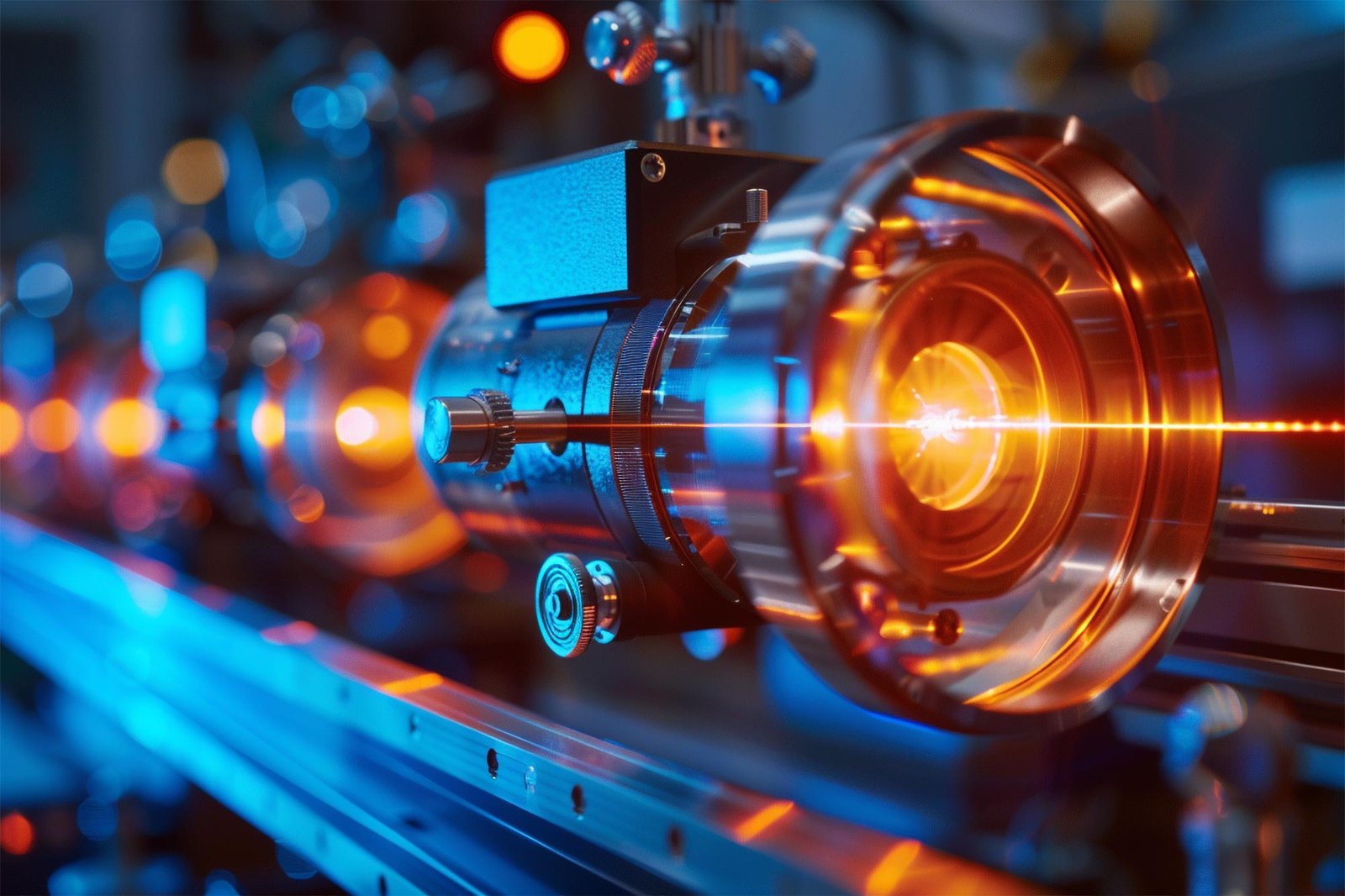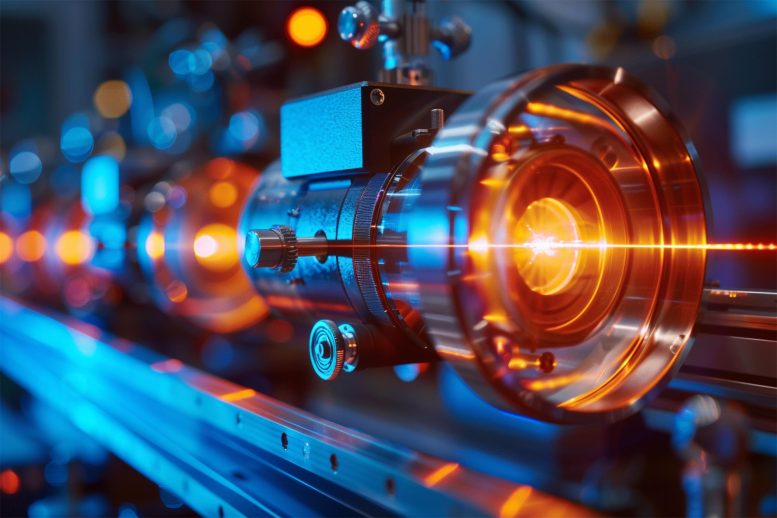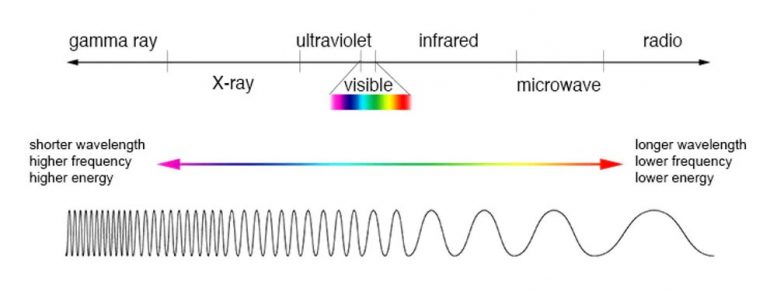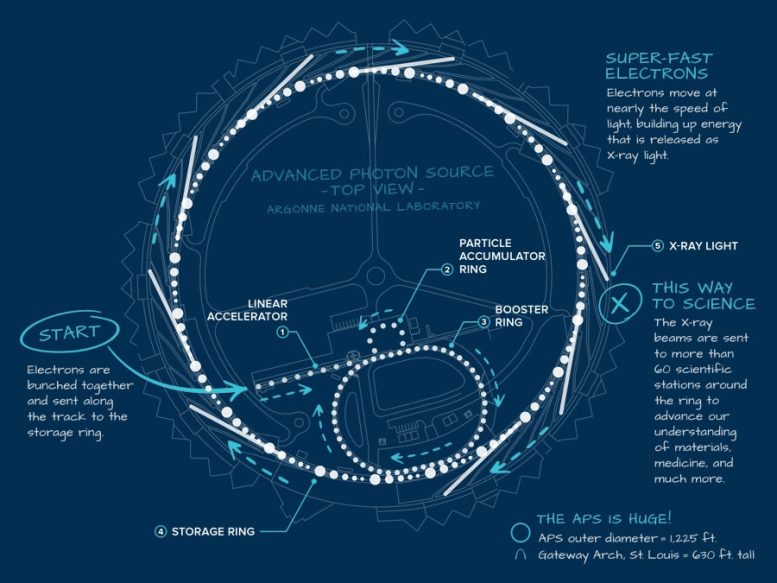
What Is an X-Ray Light Source?
-
by Anoop Singh
- 22

The Advanced Photon Source (APS) at Argonne National Laboratory is an essential facility for scientific research, providing a powerful X-ray light source to study materials in detail. By offering a closer look at internal processes, such as in batteries, APS aids in technological advancements. With its significant upgrade, the APS will increase its brightness and research capability, continuing to contribute to global health, safety, and scientific progress. Credit: SciTechDaily.com
What Is an X-Ray Light Source?
To develop treatments to combat deadly infectious diseases, we need to understand the organisms that cause them. To design the next generation of electric cars, we need to create better, longer-lasting batteries to power them. To build more efficient, safer airplane engines, we need stronger, more durable materials that won’t crack under stress.
In this Science 101: What is X-ray Light video, scientists Jessica McChesney and Gilberto Fabbris explain what X-ray light is, and how they use it at Argonne’s Advanced Photon Source (APS). X-ray light is high-energy light that exists on the electromagnetic spectrum. This spectrum includes the range of all electromagnetic waves, from the longest waves with the lowest energy (AM radio), to those in the middle (visible light), to the shortest waves with the highest energy (gamma rays). The APS at Argonne uses X-rays, which are on the end of the spectrum that has shorter wavelengths. The shorter wavelengths allow the X-rays to pass through many substances, which allows scientists like Jessica and Gilberto to peer deep into objects and discover new knowledge about the structure and function of materials. The APS is one of the most powerful X-ray light sources in the world, and more than 5,500 scientists from around the world use this huge research facility each year to test new materials, build better batteries, and find solutions for the biggest problems facing humanity.
To do all of those things, and more, a powerful X-ray light source is needed. X-rays are light, but they are not the visible light one typically thinks of when you hear the word. You may be familiar with the X-ray machines dentists use to take pictures of the insides of teeth. A light source such as the Advanced Photon Source (APS), a U.S. Department of Energy (DOE) Office of Science User Facility located at DOE’s Argonne National Laboratory, generates similar X-ray light, but a billion times brighter.
What can be done with a light that bright? The APS works like a giant microscope, but unlike visible light, X-rays are penetrating, enabling scientists to see deep inside materials. The X-ray beams can be focused so tightly that scientists can use them to “see” what happens inside a battery during use, for example, so more energy-efficient versions can be developed.
The APS, and other light sources around the world, have been improving our lives for decades. The technology that powers them – particle acceleration – has been around since the 1920s.

The electromagnetic spectrum is the range of all types of EM radiation – energy that travels and spreads out as it goes. The sun is much hotter than the Earth, so it emits radiation at a higher energy level, which has a shorter wavelength. Credit: NASA
At the heart of the APS is a storage ring, about two-thirds of a mile around. It’s so large you could fit a baseball stadium inside it. Its job is to circulate particles called electrons with high precision and at a consistent speed very near to the speed of light. Electrons travel around this ring many billions of times a day, releasing bright light at each bend in the track. The APS sends that light to experiment stations located all around the ring, where different types of science experiments are performed.
The APS is a national user facility, meaning this resource is made available to scientists worldwide. There is no charge for scientists to use it, provided that their data is released publicly. More than 5,500 scientists from around the world use the APS annually to study a wide variety of things, from new ways to combat greenhouse gases to new methods of fortifying our roads and bridges.
The APS has been a world-leading X-ray light source since it was first built in the 1990s, and its future is about to get a lot brighter. A massive upgrade is replacing the current storage ring with one that will generate X-rays up to 500 times brighter than those produced today, enabling more experiments and innovations that will improve our lives. Along with other light sources around the world, the APS will continue to enable scientists to keep us healthier, keep us safer, and improve our knowledge of the world around us.

Credit: Argonne National Laboratory
How Does an X-Ray Light Source Work?
The Advanced Photon Source creates ultrabright X-ray beams to light the way toward new discoveries.
A powerful light source such as the Advanced Photon Source (APS) is similar to the X-ray machines dentists use, except the light it creates is a billion times brighter.
- The heart of the APS is a series of machines called accelerators that use magnets to move tiny particles called electrons. The electrons are bunched together and sent moving in a straight line down a linear accelerator.
- The particle accumulator ring groups the bunches closer together.
- The booster ring circulates them as they build up speed and energy.
- The particles are then injected into the storage ring. Electrons travel around this ring billions of times a day. At each bend in the track, they release light in the form of photon particles.
- Those photons are the X-ray light that is sent to scientific stations all around the ring. Scientists use that very bright light to see deep inside materials.
The Advanced Photon Source (APS) at Argonne National Laboratory is an essential facility for scientific research, providing a powerful X-ray light source to study materials in detail. By offering a closer look at internal processes, such as in batteries, APS aids in technological advancements. With its significant upgrade, the APS will increase its brightness and…
The Advanced Photon Source (APS) at Argonne National Laboratory is an essential facility for scientific research, providing a powerful X-ray light source to study materials in detail. By offering a closer look at internal processes, such as in batteries, APS aids in technological advancements. With its significant upgrade, the APS will increase its brightness and…
